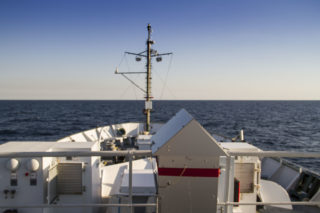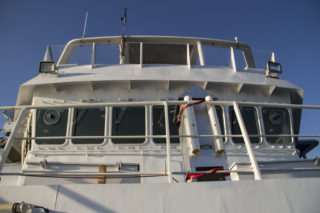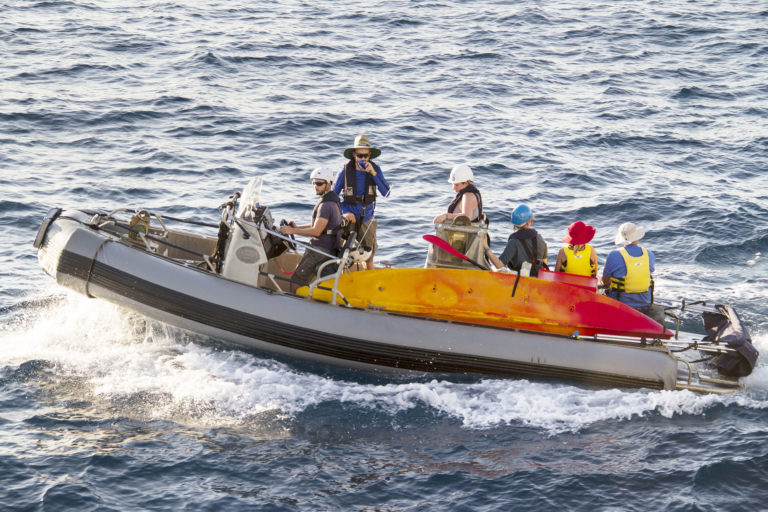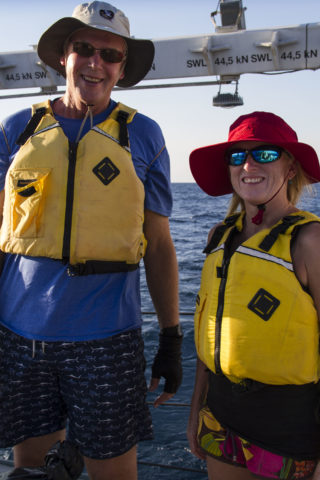
It was hot when Drs Rachel Shelley and William Landing were setting up the aerosol sampler on the forecastle of Falkor. Secured to the railing on the outside of the Bridge, the sampler is basically a vacuum machine that runs huge amounts of air through a filter, collecting dust suspended in the air. It is a bit noisy, which was another aspect to consider when deciding where to install it – not in close proximity to any of the cabins, but facing the bow of the ship since air needs to hit it in a specific direction. Temperature rose above 30 degrees centigrade, but these are experienced scientists who know that studying the surface microlayer is not easy.

Rachel and William are the “Dust People.” They are interested in how trace metals suspended in the air enter the ocean after traveling long distances through wind, and what happens to them after they do. Dust is produced primarily in desert regions, the Sahara being the largest source of trace metals to the atmosphere. Here in the waters of the Timor Sea, the team is studying the signature of Asian deserts and organic burning back in the continent.
Follow the Iron
It has been more than 20 years since Dr. Landing first became interested in iron. Iron is a limiting nutrient, which means its availability is a key condition for the very life and processes that microbes living in open ocean surface waters carry out. Iron enters the ocean through atmospheric deposition, meaning it falls into seawater from the air.
The study of this key metal led Dr. Landing to the microlayer because understanding how the boundary between the ocean and the atmosphere works is critical: nothing enters the water column without going through the surface microlayer and being transformed by it first. Essentially a bottleneck, the scientists have set to discover the what, who, and how of the microlayer’s inner workings.


No Downtime
As Falkor sails between stations, the aerosol sampler carries out its duty automatically. That does not mean that the “Dust People” get any rest, for they would not know what happens to the chemicals deposited in the water unless they test the water as well.
Paddling on a kayak away from the ship, the scientists collect water samples with a quartz glass cylinder. That way they ensure that no metal signal from the vessel finds its way into the sample and contaminates it. Back in the lab, they will filter the water collected and study the particles extracted from the microlayer. They carry out this process every day, twice a day.
Three science teams with different areas of specialization work side-by-side daily to make sure no stone is left unturned in the study of the Sea Surface Microlayer. Trace metals transported in the air are certainly a key clue to untangle the tale of the connection between the atmosphere and the ocean, and the “Dust People” are here to make sure we don’t miss it.

